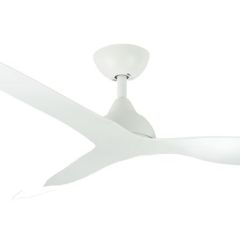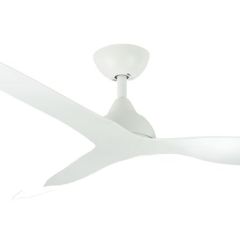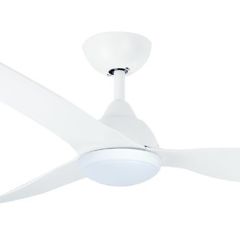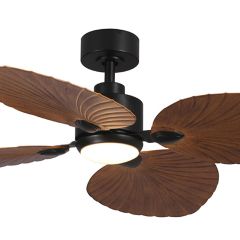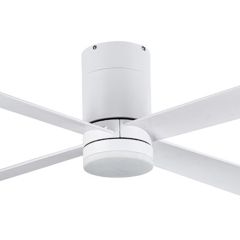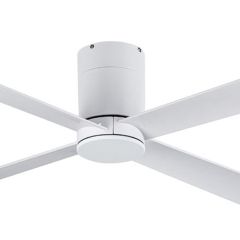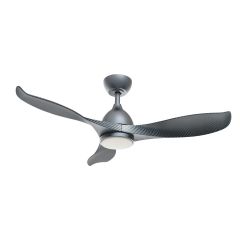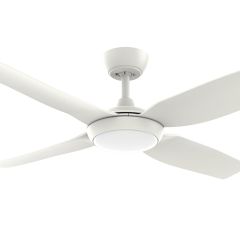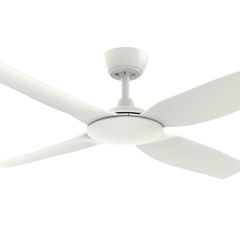Advantages of DC Ceiling Fans
- DC ceiling fans are known for their high energy efficiency. Compared to AC motors, DC motors consume significantly less power, up to 70% less. For example, while an AC fan may use 100 watts, a DC fan only needs around 30 watts to achieve the same level of performance.
- One notable advantage of DC ceiling fans is their slim design. The motors of these fans are less bulky, giving them a sleek and streamlined appearance. This feature makes it easier to seamlessly incorporate them into your space.
- DC motors are specifically engineered to offer greater control over power consumption and rotational speed. Typically, DC fans provide a range of speed options, often up to 6 settings, enabling users to have better control over airflow and energy usage.
- In addition, DC ceiling fans are highly responsive to remote control commands. They offer a wider selection of speed options and frequently include a reverse function on the remote. This enhanced functionality grants users increased convenience and control. By allowing precise control over factors such as speed, DC fans contribute to extending the lifespan of the fan.
- Furthermore, DC ceiling fans operate quietly, ensuring a peaceful and undisturbed environment.
Disadvantages of DC Ceiling Fans
- DC ceiling fans are generally more expensive compared to other types of fans, although the cost has reduced significantly over time due to technological advancements and improvements in manufacturing processes. Despite their energy efficiency, it may take a considerable period before you start to realize the financial benefits of investing in a DC fan.
- Typically, most DC fan models come with a remote control as the standard control method. However, with advancements in technology, many models now include wall controls as well. Moreover, some manufacturers offer wall controls as an additional accessory that can be added to your DC ceiling fan.




















